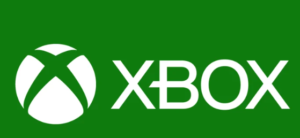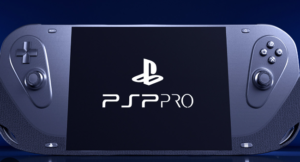Blog Content Overview
- 1 Introduction
- 2 Types of Intellectual Properties in Gaming Industry
- 3 What can be protected under copyright protection in Gaming Industry?
- 4 What provisions are there for Patent Law in the Gaming Industry?
- 5 What are the Trademark Law for Video Games?
- 6 What are the Trade Secret Law for Gaming Industry?
- 7 Conclusion – The Intricate Web of Intellectual Property in Gaming
- 8 FAQs on Intellectual Property Rights in Gaming:
Introduction
In the ever-evolving world of gaming, innovation and imagination often take the centre stage. Intellectual Property Rights are a crucial foundation in the gaming industry as they safeguard everything we cherish, from our beloved characters to the groundbreaking technologies that fuel immersive adventures. Let us learn about types of intellectual property rights in gaming industry.
Types of Intellectual Properties in Gaming Industry
1) Trademark
Safeguarding brand elements like names, logos, slogans, taglines, sound marks, cartoon images etc. that differentiate one vendor’s products or services from another’s. Trademarks registration is optional but advisable, and once granted will be valid for 10 years, renewable every decade. A recognizable phrase, word, symbol, or emblem that designates a particular product and legally sets it apart from all other items of its sort is referred to as a trademark. A trademark acknowledges the firm’s ownership of the brand and uniquely identifies a product as being owned by that company. Trademarks may or may not be registered and are often regarded as a type of intellectual property. Any term, phrase, symbol, design, or combination of these that uniquely distinguishes your products or services can be used as a trademark. It’s how consumers identify you in the market and set you apart from your rivals. Both service marks and trademarks may be referred to by the same term. A service mark is used for services, whereas a trademark is used for commodities.
Key IP
- Names, word-marks,
- Logos, symbols,
- Tag-lines,
- Cartoon/ caricature image,
- Short sound marks
Example

XBOX Logo
2) Copyright
Copyright is an inherent right for original works, like literary, artistic, dramatic, musical, cinematographic, architectural works and software codes. Creator owns the copyright 60 years from creation before the work becomes public. The legal word “copyright,” often known as “author’s right,” refers to the ownership rights that authors and artists have over their creative works. Books, music, paintings, sculptures, films, computer programmes, databases, ads, maps, and technical drawings are among the works that fall under the purview of copyright protection. For a specific amount of time, copyright law grants the producers of creative content the only authority to use and replicate their creations. The copyrighted material enters public domain when the copyright expires.
Key IP
- Software code,
- Cartoon caricature,
- Storyline,
- Music and sound effects,
- Conceptual art and design,
- Maps and buildings,
- Choreography
- Gaming rules and manual
Example

3) Patent
Protection for an original invention, typically granted for 20 years, and covers utility, plant/industrial, or design patents. An innovation is entitled to a patent, which is an exclusive privilege. Put another way, a patent is the exclusive right to a good or service that, in most cases, offers a novel approach to a problem or a fresh technical solution. Technical details of the invention must be made public in a patent application in order to get one.
On mutually agreeable terms, the patent owner may provide permission or a license to third parties to exploit the innovation. The patent owner may potentially transfer ownership of the innovation to a third party by selling them the right to use it. An innovation becomes public domain—that is, anybody can use it for commercial purposes without violating the patent—when a patent expires, ending its protection. In return for a thorough disclosure of the innovation, a patent grants the creator the exclusive right to use the patented design, technique, or invention for a certain amount of time. They represent a type of intangible right. Usually, government organizations examine and authorize patent applications.
Key IP
- Gaming console, joystick or other hardware device, and
- Drastically unique or different technology
- User interfaces
4) Design
Protection for the aesthetic appearance of products/articles, including shape, configuration, pattern, ornament, or composition of lines/colours. Intellectual property in design is the result of human creativity. This covers names and pictures that may be used in business, as well as designs, emblems, innovations, and creative and literary works. The legal protection of intellectual property is provided by copyright, patents, and trademarks. These enable individuals to profit monetarily or gain notoriety for the goods they produce. The system fosters an atmosphere where creativity and innovation may flourish by striking the right balance between the interests of inventors and the larger public good. For creative workers, intellectual property is a crucial subject. In legal terms, an article’s decorative or artistic elements are referred to as its industrial design. Two-dimensional elements like lines or patterns may be present, or there may be three-dimensional elements like the contour of an object. A registered or patent-holding owner of an industrial design has the legal authority to prevent other parties from manufacturing, importing, or selling products that imitate their design. A wide range of handicrafts and industrial products are included in industrial designs. They consist of textiles, jewellery, electronics, home items, and containers.
These designs may also apply to logos, visual symbols, and graphical user interfaces. To be protected by industrial design laws, the majority of countries mandate that all industrial designs be registered. Some nations’ laws grant unregistered industrial designs—a term used to describe designs that are not registered—limited protection. Certain industrial designs, like works of art, could also be protected by copyright laws. One of the key elements that draws customers to a product and convinces them to choose it over another is its design. An unique, novel, and unobtrusive decorative design for a manufactured item is protected by a design patent. Just the look is protected by the patent; the structural or functional aspects are not. For instance, the outside style of an athletic sneaker or bicycle helmet may be protected. There will be no intermediate maintenance costs, and the design patent will remain enforceable for 14 years after it was first awarded. When it comes to intellectual and copyright property, designers face several challenges. It is more difficult for artists to maintain ownership control when a single idea is presented in a variety of forms and media.
Key IP
- Graphic characters,
- Gaming cover and
- Graphic interface
5) Trade Secret
Trade secrets are confidential, commercially valuable information known to a limited group and protected by the rightful owner through reasonable measures, typically including confidentiality agreements. Economically valuable knowledge that is not widely known, has value for those who cannot lawfully access it, and has been the subject of reasonable attempts to keep secret is referred to as a trade secret. Trade secrets are crucial for gaining financial advantage, strategic positioning, and commercial competitiveness. One can recognize trade secrets and learn how to properly secure them with the aid of this toolbox. One kind of IP is a trade secret. A trade secret is only real for the duration that it is kept secret. Not only is it crucial to keep trade secrets secret from a business perspective, but owners of trade secrets are legally required to take specific actions in order to preserve their rights. Misappropriation happens when someone discloses, obtains, or uses a trade secret after knowing or having reasonable suspicion that it was obtained illegally. Courts have shed light on what constitutes “improper” behaviour via trade secret lawsuits, even if the law doesn’t define it.
Key IP
- Algorithms and
- Customer lists
What can be protected under copyright protection in Gaming Industry?
The game is qualified for copyright protection, but each component of the game is also protected. This covers the game’s storyline, sound effects, music, graphic designs, characters, and more. A video game is more than just its gameplay; it’s also about its contents and other elements that make it whole and satisfying. Not just the programme itself is deserving of praise; every character, screenplay, game code, piece of music, sound recording, and graphic design has a right to protection under different copyright laws. In the US, video games and other types of media have comparable copyright protection periods. Video games are awarded a copyright that lasts for 95 years from the date of publishing or 120 years from the date of invention, whichever comes first, because the majority of them are made by companies.
What provisions are there for Patent Law in the Gaming Industry?
Patents for video games can cover a broad variety of novel features. Whether they have to do with the game engines, software, or hardware. techniques for application communication, game interfaces, or even gameplay techniques. Novel technological developments such as new methods of avatar transmission or the addition of additional hardware components to controllers can be protected by these patents. Moreover, patents can be acquired for advancements made to current technology. A video game’s components that can entail patents are as follows:
- Used algorithms
- Editing functions, menu organization, and display representation functions of control
characteristics of the user interface, - Data processing, formulas, program languages, compilation processes, translation procedures, and utilities.
The main concern regarding the patentability of video games is the possibility that software may be patented. A software patent is characterized as a patent awarded for computer functions performed by computer programs. The capacity to patent software is now the subject of a contentious discussion, with some advocating for no protection at all and others suggesting protection only under very specific guidelines. The European Patent Convention (EPC) expressly excludes computer programmes from eligibility for patents in Europe. By upholding a regulation that specifies software cannot be patented unless it can establish an extra technical impact beyond the inherent technological interactions between the hardware and the software , the European Patent Office (EPO) sustains this exclusion. Developing video games frequently results in the development of patentable technology that isn’t limited to a single game. Many gaming firms use the same, or nearly the same, technologies in their various titles. Alternatively, they create game-specific technology that form the basis of a whole line of goods. One example of this would be the creation of a first-person shooter game engine platform. a communications platform for interactive mobile games, or a graphical user interface platform for racing games. by locating these crucial innovations and securing patent protection for them. Businesses can obtain a considerable competitive edge. To be eligible for patent protection, it is crucial to remember that. The programme needs to fulfil specific criteria, such being brand-new. Not immediately apparent. Practical. and signed up.
What are the Trademark Law for Video Games?
Securing ownership over these marks owned by developers and producers themselves is the first step in ensuring trademark protection for video games. These people or businesses have legally registered names and logos (words, pictures, and sounds) that serve as their unique identifiers in this industry area. Interestingly, these distinct markers are repeated throughout a game’s graphical user interface and are prominently displayed through splash screens at the game’s opening. In a similar vein, they decorate digital package materials, boxed editions, and online adverts in a manner appropriate for them. In addition to adding unique identifiers associated with a certain video game, unaffiliated parties (such as the game’s developers or producers) may be able to obtain trademarks through creative techniques that meet their specific needs.
What are the Trade Secret Law for Gaming Industry?
Trade secrets are a key component of intellectual property rights (IPR), which are extremely important in the gaming business. Confidential information such as formulae, procedures, methods, or strategies that provide organizations a competitive edge are considered trade secrets. inside the video game business. Character creation, gaming mechanics, game design, algorithms, and other aspects are all considered trade secrets. Trade Secret Example Axel Gembe was accused in 2004 of breaking into the network of Valve Corporation, stealing the computer game Half-Life 2, releasing it online, and creating damages that Valve estimated to be worth more than $250 million. Companies in the gaming business use a number of precautions to safeguard trade secrets, such as: Developers often ask partners, contractors, and staff to sign confidentiality agreements in order to protect private data and stop abuse or unauthorized disclosure. Businesses also use restricted access strategies to safeguard trade secrets. limiting access to just authorised workers who have a real need to know this kind of information. These security precautions guarantee that private information is protected and that unauthorized parties cannot access it or compromise its privacy.
To safeguard priceless trade secrets against online attacks and unwanted access. Businesses use both digital and physical security measures. These precautions include of monitoring systems, access controls, secure servers, and encryption. by putting these precautions into place. Businesses can successfully stop unauthorised people from getting their hands on private information. Companies may also ask partners, publishers, distributors, and other third parties to sign Non-Disclosure Agreements (NDAs) in addition to these security precautions. These NDAs work as a formal agreement that guarantees the privacy of disclosed private information. Companies are being proactive in protecting any unauthorized exposure or use of their valuable information by forcing third parties to sign non-disclosure agreements (NDAs).
Conclusion – The Intricate Web of Intellectual Property in Gaming
The world of gaming thrives on creativity and innovation, constantly pushing boundaries and forging unique experiences. But behind the dazzling visuals and immersive storylines lies a complex web of intellectual property (IP) rights. From iconic characters and innovative mechanics to intricate game designs and proprietary software, IP safeguards the very essence of what makes a game unique.
- Copyright stands as the cornerstone of game protection, shielding the creative expression of its creators. It covers the game’s code, artwork, music, and storyline, preventing unauthorized copying or distribution. Trademarks like logos, character names, and slogans become instantly recognizable symbols, differentiating brands and protecting consumer trust.
- Patents, though less common, play a crucial role in safeguarding novel game mechanics, hardware innovations, and even specific algorithms. They incentivize research and development, fostering advancements in gaming technology and experiences.
- Design protection shields the visual identity of games, encompassing everything from character appearance to user interfaces. This ensures the distinct look and feel of a game remains unique, preventing copycats from capitalizing on another’s creative vision.
- Trade secrets, on the other hand, cloak vital technical know-how and confidential business information. This could include proprietary game engines, development tools, or even specific algorithms or formulas that drive in-game economies. Protecting these secrets maintains a competitive edge and safeguards the financial viability of studios.
However, the intricate tapestry of IP in gaming isn’t without its challenges. Balancing protection with the freedom to innovate remains a constant concern. Fair use doctrines and limitations on copyright pose questions about permissible inspiration and derivative works. Patent thickets, where numerous overlapping patents stifle competition, can hinder progress. Furthermore, enforcing IP rights across international borders becomes complex due to varying legal frameworks and enforcement capabilities. Piracy and unauthorized distribution continue to plague the industry, demanding collaborative efforts to combat them. Despite these challenges, a robust IP framework remains essential for the gaming industry’s continued growth and vibrancy. It incentivizes creativity, fosters innovation, and protects the investments made in building captivating worlds and experiences. Through ongoing dialogue and collaborative efforts, stakeholders can ensure that IP rights support, rather than hinder, the future of gaming, allowing it to continue delivering immersive experiences that capture the imagination of players worldwide.
FAQs on Intellectual Property Rights in Gaming:
- Trademark: Can I trademark my in-game username or clan name?
Yes, potentially! If your username or clan name is unique, distinctive, and used in commerce (e.g., merchandise), you can file for trademark protection. However, be aware of existing trademarks and restrictions by game platforms.
- Copyright: Do I own the copyright to my gameplay recordings or screenshots?
Generally, yes, you own the copyright to your creations, including gameplay recordings and screenshots. However, game terms of service might limit use, and copyrighted content within the game (e.g., music) remains protected by its owner.
- Design: Can I patent the look and feel of my in-game character or item?
For design patents, it depends on originality and functionality. Simple character designs might not qualify, but unique and non-obvious elements could. Consult an expert for specific advice.
- Trade Secret: Can I keep my game’s mechanics or algorithms secret?
Yes, trade secrets can protect confidential information like game mechanics or algorithms. However, maintaining secrecy is crucial, and reverse engineering might expose them. Carefully assess what truly needs trade secret protection.
- Copyright: Can I use copyrighted music or characters in my game?
No, not without permission. Using copyrighted material without licenses or fair use exceptions constitutes infringement. Obtain licensing rights or use royalty-free alternatives.
- Copyright: What about using assets from the game engine or community-created mods?
Respect licensing terms! Game engine assets usually come with usage restrictions. Community-created mods might have individual copyright ownership, so check and credit accordingly.
- Trademark: Can I use another game’s name or logo in my own game?
Trademarks protect brand identity. Using another game’s name or logo without permission, even for criticism, could be infringement. Consider alternatives or seek proper licensing.
- Copyright: Can I stream or monetize gameplay walkthroughs of copyrighted games?
Fair use might allow some transformative content like commentary or reviews. However, extensive gameplay footage without significant addition might infringe. Check game terms and fair use guidelines.
- Copyright: Can I create and sell fan art or merchandise based on game characters or logos?
Copyright law applies. Using copyrighted characters or logos for commercial gain without permission is usually infringement. Consider fair use for limited, transformative works or seek licensing from the rights holder.
- Patent: Can I patent a new game mechanic or concept?
Game mechanics are often abstract ideas, which are generally not patentable. However, specific technical implementations or unique devices involved in the game might be patentable. Consult an expert for specific advice.
**Images shown are for representation purposes only and all rights belong to respective owners.
We Are Problem Solvers. And Take Accountability.
Related Posts

IFSCA Regulatory Newsletter – April 2025 to November 2025
The International Financial Services Centres Authority (IFSCA) has demonstrated exceptional regulatory dynamism during the April-October 2025 period, introducing transformative frameworks...
Learn More

VCFO for Exit Strategy – Role in Financials, Equity and M&A
Every business owner will eventually navigate a liquidity event. The choice of exit strategy whether an Initial Public Offering (IPO),...
Learn More

Important Financial timelines before 31st March 2026
As the financial year 2025–26 closes, taxpayers whether individuals, startups, small businesses, or companies must complete several statutory and tax-related...
Learn More













